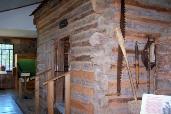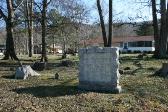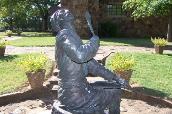


Sequoyah's Cabin
The final home of Sequoyah
can be seen today at a state
historic site near Sallisaw,
Oklahoma.
The final home of Sequoyah
can be seen today at a state
historic site near Sallisaw,
Oklahoma.
A Chair by the Fire
The great Cherokee scholar
spent many evenings by the
fire in his small cabin. His
final journey began from here.
The great Cherokee scholar
spent many evenings by the
fire in his small cabin. His
final journey began from here.
ExploreSouthernHistory.com - Sequoyah and the Cherokee Alphabet
ExploreSouthernHistory.com - Sequoyah and the Cherokee Alphabet
Sequoyah - Inventor of the Cherokee Alphabet

| Sequoyah The Cherokee scholar and his remarkable alphabet were memorialized in this painting by 19th century artist Charles Bird King. |
Explorer, Soldier and Scholar
Memorials in several Southern states pay
tribute to one of the most remarkable heroes
in American history.
Sequoyah was a soldier, explorer and
scholar who forever changed the life of his
people, the Cherokee Indians. He also
stands today as a remarkable example of the
potential of Americans with disabilities.
Born in Tennessee in around 1770,
Sequoyah was the son of a white father and
a Cherokee woman. Raised entirely as a
Cherokee, although he often used his white
name of George Gist or Guess, he served
with the U.S. army of Andrew Jackson at the
bloody Battle of Horseshoe Bend, Alabama
and is recognized today as a soldier of the
War of 1812.
Maimed early in life in an unfortunate hunting
accident, Sequoyah spent much of his life
contemplating the future of his people. In the
years after the War of 1812, he became
convinced that the key to the survival and
future prosperity of the Cherokee lay in their
ability to develop a written language. No other
Native American tribe had contemplated
such a thing, but in Sequoyah's eyes, it was
the key to developing a culture that could rival
that of the whites who were rapidly spreading
west across the continent.
Despite ridicule from family and friends,
Sequoyah began a passionate effort to
reduce the Cherokee language to written
symbols that could be reproduced and
printed.
The work became the focus of his life after he
relocated to the Wills Town area of Alabama
(near today's Fort Payne) and in 1821 he
successfully demonstrated his Cherokee
alphabet. The leaders of the nation were
astounded by the remarkable development
and in 1825 gave their approval to
Sequoyah's efforts.
The Cherokee Alphabet was the only written
language ever developed by a Native
American tribe. As Sequoyah educated
others in its use, the ability to read and write
in their own language appealed to the
Cherokee and use of the alphabet exploded
in the nation.
By 1828, just seven years after the council
first saw Sequoyah's alphabet, the Cherokee
became the first Native American tribe to
launch a newspaper in its own language.
Elias Boudinot began publishing the
Cherokee Phoenix that year in Georgia.
By the time the newspaper appeared in print,
however, Sequoyah had begun the journey
that would take him far into the American
West. He left Alabama for Arkansas in 1825
where he settled among Cherokee that had
tribute to one of the most remarkable heroes
in American history.
Sequoyah was a soldier, explorer and
scholar who forever changed the life of his
people, the Cherokee Indians. He also
stands today as a remarkable example of the
potential of Americans with disabilities.
Born in Tennessee in around 1770,
Sequoyah was the son of a white father and
a Cherokee woman. Raised entirely as a
Cherokee, although he often used his white
name of George Gist or Guess, he served
with the U.S. army of Andrew Jackson at the
bloody Battle of Horseshoe Bend, Alabama
and is recognized today as a soldier of the
War of 1812.
Maimed early in life in an unfortunate hunting
accident, Sequoyah spent much of his life
contemplating the future of his people. In the
years after the War of 1812, he became
convinced that the key to the survival and
future prosperity of the Cherokee lay in their
ability to develop a written language. No other
Native American tribe had contemplated
such a thing, but in Sequoyah's eyes, it was
the key to developing a culture that could rival
that of the whites who were rapidly spreading
west across the continent.
Despite ridicule from family and friends,
Sequoyah began a passionate effort to
reduce the Cherokee language to written
symbols that could be reproduced and
printed.
The work became the focus of his life after he
relocated to the Wills Town area of Alabama
(near today's Fort Payne) and in 1821 he
successfully demonstrated his Cherokee
alphabet. The leaders of the nation were
astounded by the remarkable development
and in 1825 gave their approval to
Sequoyah's efforts.
The Cherokee Alphabet was the only written
language ever developed by a Native
American tribe. As Sequoyah educated
others in its use, the ability to read and write
in their own language appealed to the
Cherokee and use of the alphabet exploded
in the nation.
By 1828, just seven years after the council
first saw Sequoyah's alphabet, the Cherokee
became the first Native American tribe to
launch a newspaper in its own language.
Elias Boudinot began publishing the
Cherokee Phoenix that year in Georgia.
By the time the newspaper appeared in print,
however, Sequoyah had begun the journey
that would take him far into the American
West. He left Alabama for Arkansas in 1825
where he settled among Cherokee that had
voluntarily migrated west of the Mississippi.
In 1828, the same year that the Cherokee
Phoenix began publication, he represented
the Western Cherokee in a council at
Washington, D.C. that resulted in the
government decision to grant lands to the
Cherokee in what is now Oklahoma.
Sequoyah was one of the first Cherokee to
relocate to the new lands in Oklahoma. By
1829 he was living in a small log cabin that
still stands a few miles north of the town of
Sallisaw.
He spent the last years working on a second
alphabet by which he hoped that America's
various Indian tribes might be able to
communicate with each other. The project
was never completed, but he journeyed as
far west as New Mexico and Arizona.
Sequoyah died in 1845 while on a trip to
Mexico searching for a band of Cherokee that
tribal tradition indicated had relocated there
many years earlier. His exact burial site is not
known. Wills Town, where he completed his
alphabet, is now marked by a memorial and
his Oklahoma cabin is a state historic site.
Follow the links below for more.
In 1828, the same year that the Cherokee
Phoenix began publication, he represented
the Western Cherokee in a council at
Washington, D.C. that resulted in the
government decision to grant lands to the
Cherokee in what is now Oklahoma.
Sequoyah was one of the first Cherokee to
relocate to the new lands in Oklahoma. By
1829 he was living in a small log cabin that
still stands a few miles north of the town of
Sallisaw.
He spent the last years working on a second
alphabet by which he hoped that America's
various Indian tribes might be able to
communicate with each other. The project
was never completed, but he journeyed as
far west as New Mexico and Arizona.
Sequoyah died in 1845 while on a trip to
Mexico searching for a band of Cherokee that
tribal tradition indicated had relocated there
many years earlier. His exact burial site is not
known. Wills Town, where he completed his
alphabet, is now marked by a memorial and
his Oklahoma cabin is a state historic site.
Follow the links below for more.

A Home in Alabama
A historic marker funded by
the country music group
Alabama pays tribute to
Sequoyah's years near Fort
Payne, Alabama.
A historic marker funded by
the country music group
Alabama pays tribute to
Sequoyah's years near Fort
Payne, Alabama.

Wills Town, Alabama
A stone monument marks the
site of the Cherokee village of
Wells Town. It was near here
that Sequoyah developed his
famed Cherokee alphabet.
A stone monument marks the
site of the Cherokee village of
Wells Town. It was near here
that Sequoyah developed his
famed Cherokee alphabet.

A Memorial to Sequoyah
A beautiful statue of
Sequoyah is located on the
grounds of his cabin, now a
historic site near Sallisaw,
Oklahoma.
A beautiful statue of
Sequoyah is located on the
grounds of his cabin, now a
historic site near Sallisaw,
Oklahoma.
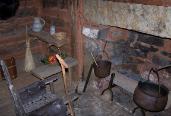
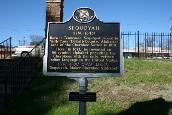
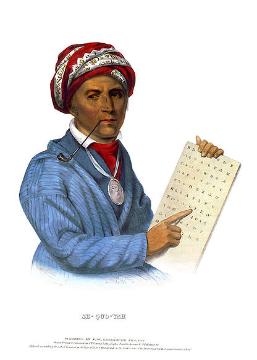

Wills Town - Fort Payne, Alabama
The Battle of Horseshoe Bend, Alabama
Sequoyah's Cabin - Sallisaw, Oklahoma
Explore other Southern Historic Sites
The Battle of Horseshoe Bend, Alabama
Sequoyah's Cabin - Sallisaw, Oklahoma
Explore other Southern Historic Sites

Custom Search
| Copyright 2011 by Dale Cox All rights reserved. |
